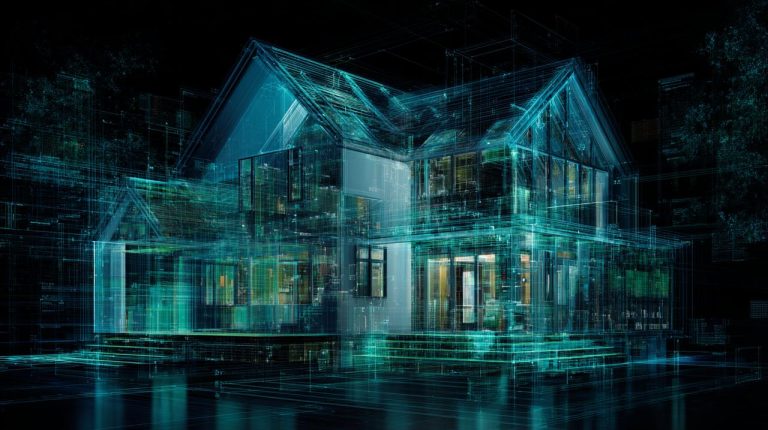For many of us, the dream of owning a home is deeply ingrained. Yet, the reality of today’s housing market often leaves us with a crucial question: Is buying always the smartest financial move? Or could renting actually lead to greater wealth and flexibility?
This isn’t just about personal preference; it’s a complex financial and emotional crossroads. Understanding your unique situation is absolutely paramount. The key to navigating this decision lies in identifying your personal rent vs. buy break-even point.
Unmasking the Break-Even Point: More Than Just a Number
Think of the rent vs. buy break-even point as a critical financial milestone. It represents the specific duration you need to live in a purchased home for its total costs to equal, or even surpass, the cumulative costs of renting a comparable property.
It’s that pivotal moment when the financial scales truly tip in favor of homeownership. This calculation moves beyond the simplistic idea that renting is “wasted money” by carefully accounting for all associated expenses.
Understanding this point empowers you to make informed decisions tailored to your personal financial goals and lifestyle. It clarifies whether a short-term relocation or a long-term commitment aligns best with your housing strategy, providing a robust framework for comparing two fundamentally different financial paths.

The Tangible and Intangible Variables: What Shapes Your Break-Even Point
Determining your break-even point isn’t a simple equation. It involves considering a wide array of factors, some purely financial, others influenced by broader market conditions or your own personal circumstances. Each variable plays a significant role in tilting the balance one way or another.
Financial Inputs: The Money Side of the Equation
When you buy a home, you encounter a multitude of upfront and ongoing costs. These typically include a substantial down payment and significant closing costs, which can add thousands to your initial outlay. Your monthly expenses will then cover mortgage interest, property taxes, and homeowner’s insurance premiums.
Beyond these, homeowners must also budget for often unpredictable maintenance and repairs. Conversely, renters generally only pay monthly rent and perhaps renter’s insurance. It’s also vital to consider the opportunity cost of your down payment—what that money could have earned if invested elsewhere.
Market Dynamics: The External Forces at Play
External forces significantly impact your break-even point. How quickly your home’s value might grow, known as property appreciation, can offset many purchase costs. Similarly, rent inflation influences how much the cost of renting will rise over time.
Mortgage interest rates are another critical factor; lower rates reduce your monthly payments and total interest paid, making buying more attractive. And of course, local market conditions, including housing supply and demand, will always influence both property values and rental prices.
Personal Factors: Your Life, Your Decision
Your individual circumstances are just as crucial as the financial numbers. Your time horizon is perhaps the most critical personal factor: the longer you plan to stay in one place, the more likely buying becomes financially advantageous.
Lifestyle flexibility is another key consideration, as renting offers much easier relocation for career opportunities or personal growth. Your comfort level with financial risk and your willingness to handle home maintenance also weigh heavily into this decision. Remember, a sudden job change or a desire to move cross-country can transform homeownership from an asset into a financial burden.
Calculating Your Crossroads: A Step-by-Step Approach
While the break-even point calculation can seem complex, it can be approached systematically. It involves comparing the cumulative costs of renting versus buying over various timeframes.
Here’s a simplified breakdown:
- Annual Renting Costs: Your monthly rent (multiplied by 12), renter’s insurance, and any other recurring rental fees.
- Annual Homeownership Costs: Annual mortgage interest (excluding principal), property taxes, homeowner’s insurance, estimated annual maintenance (often 1-3% of home value), any HOA fees, and the opportunity cost of your down payment (what it could earn if invested).
Then, you factor in one-time buying costs like the down payment and closing costs. You project these costs over several years, accounting for potential appreciation and rent increases. The point at which the total cost of renting exceeds the total cost of owning (including initial purchase costs amortized over time) is your break-even point.

The break-even point is less about a single magical number and more about a personalized financial compass, guiding you through the housing market’s complexities.
The Silent Costs and Hidden Benefits: Beyond the Numbers
While the financial calculation is undeniably vital, the decision to rent or buy carries significant psychological and lifestyle implications that often go unmeasured. These ‘silent costs’ and ‘hidden benefits’ can profoundly impact your overall well-being.
Homeownership, for instance, comes with the emotional burden of responsibility. Every leaky faucet or broken appliance becomes your problem and expense. This can be a significant silent cost for those who truly value freedom from maintenance. Renters, conversely, enjoy the peace of mind that comes with minimal responsibility for property upkeep.
However, homeownership often provides a deep sense of stability, community roots, and the profound psychological satisfaction of building equity. This feeling of permanence and personal investment can be a powerful hidden benefit that financial calculations alone simply cannot capture.
Conversely, renting offers unparalleled flexibility, allowing for easy relocation for career opportunities or personal growth—a clear benefit for those who prioritize adaptability and freedom of movement.
Navigating Your Housing Journey: When to Rent, When to Buy
Ultimately, understanding your break-even point empowers you to make a decision that aligns perfectly with your financial reality and life aspirations. It’s a powerful tool, not a definitive command, offering much-needed clarity in a complex landscape.

For example, if your break-even point is seven years, but you anticipate moving in five, then renting might be the more financially prudent choice for you. Conversely, if you plan to settle down for a decade or more, buying will likely offer significant long-term financial advantages.
The decision often boils down to your personal timeline and your tolerance for property-related responsibilities. Your housing journey is, and always will be, deeply personal.
The rent vs. buy break-even point provides a robust analytical framework, allowing you to weigh the tangible costs against the invaluable, often unseen, benefits of both options. Use this calculation as your informed guide, and for a precise, personalized analysis, our Rent vs. Buy Financial Model can help you navigate your unique housing journey .
💡 Frequently Asked Questions
The rent vs. buy break-even point is a critical financial milestone that represents the specific duration you need to live in a purchased home for its total costs to equal or surpass the cumulative costs of renting a comparable property. It's the moment when the financial scales tip in favor of homeownership.
The break-even point is influenced by financial inputs (e.g., down payment, mortgage, taxes, maintenance, opportunity cost), market dynamics (e.g., property appreciation, rent inflation, mortgage interest rates), and personal factors (e.g., time horizon, lifestyle flexibility, comfort with financial risk, willingness to handle maintenance).
It's calculated by comparing the cumulative costs of renting (monthly rent, renter's insurance) versus owning (annual mortgage interest, property taxes, homeowner's insurance, estimated maintenance, HOA fees, opportunity cost of down payment, and one-time buying costs like down payment and closing costs) over various timeframes.
Beyond financial calculations, there are 'silent costs' and 'hidden benefits'. Homeownership brings the emotional burden of responsibility for maintenance but offers a sense of stability, community roots, and the psychological satisfaction of building equity. Renting offers unparalleled flexibility for relocation and freedom from maintenance responsibilities.








